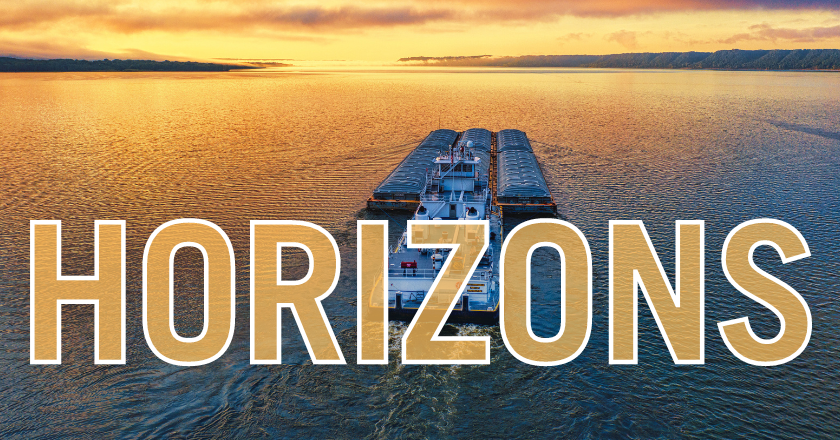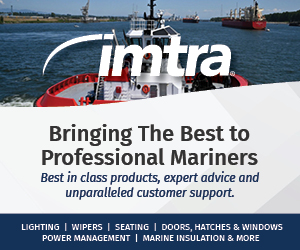
Inspecting means different things to various people. According to Merriam-Webster, inspecting means “to view closely in critical appraisal or to examine officially.”
Building, electrical and plumbing inspectors assure what is being built, wired and plumbed meets local codes. Vehicle inspectors confirm vehicles are safe with working lights, turn signals (as if many people remember the purpose of these), brakes and exhaust systems. Coast Guard inspectors confirm the safety and workings of a towboat or barge.
Nehemiah from the Old Testament book that bears his name was an inspector in his own right. He assessed the gaps and problems with Jerusalem’s walls and identified what was needed to repair those walls. From that inspection he developed a plan to rebuild the walls of Jerusalem.
Inspecting the Mississippi River and Tributaries Has a Long History
The Army Corps of Engineers, specifically the Mississippi River Commission (MRC), embarks on two inspection journeys of their own each year, the winter high water and summer lower water inspections. These are “official” appraisals and examinations of the infrastructure of the Mississippi River and Tributaries (MRT), including the channels, locks, dams, levees, pumps, etc.
The mission of the MRC is straightforward: “to develop plans to improve the condition of the Mississippi River, foster navigation, promote commerce and prevent destructive floods.” These inspections were enacted as part of the 1928 Flood Control Act. The twice annual inspections take place aboard the m/v Mississippi, the Corps’ flagship towboat that allows the seven-person commission to inspect the system with boots on the ground (or waders in the water?). As part of the inspection tours, the MRC hosts public hearings at various locations along the MRT.
The public hearings are open to the public, allowing participants to testify before the MRC about interests and topics related to the MRT. Many participants represent local ports, levee districts, commodity associations, towboat operators, conservation groups, local and state government officials, and others. This year’s low water inspection commenced August 19 in New Madrid, Mo., with additional stops in Memphis, Tenn., Lake Village, Ark., and Berwick, La.
Brig. Gen. Kimberly Peeples, president of the MRC, presided over the hearing in Memphis. Col. Brian D. Sawser, commander of the Memphis District, gave an update on projects across the district. Public testimony from 14 people ensued.
The Mississippi River is an Economic Reality
Two common themes emerged from the testimonies: the Mississippi River is an economic powerhouse, and it takes partnership to keep it flowing.
As an economic powerhouse, the Mississippi River allows commerce of the hinterland and upper reaches of the United States to be barged to and from the Gulf of Mexico, connecting those commodities with the world. Commodities moved on the MRT feed, fuel and provide the fiber that nourishes, energizes and clothes the world.
The volume of commodities moved by barge on the MRT totals about 500 million tons in recent years. Based on available data from the Corps, the volume moved on the MRT today is not too different from what moved on the system during the 1970s. From the 1980s through 2008, the tonnage moved firmed and hovered around 600 million tons, as shown the graph.
On a ton-mile basis (moving one ton of cargo one mile), ton-miles total nearly 250 billion. In 1970, ton-miles totaled 150 billion, surpassed 250 billion in 1986, floated around 300 billion during the 1990s and into the early 2000s. Previous Horizons columns looked at the commodities moving on the MRT in more detail.
The point here is that the MRT is the means to allow trade and commerce to take place.
Inspecting to Keep Trade Moving, Or Otherwise Pay the Price
The other reality is that the MRT is aging, and various parts of the infrastructure need, rather than maintenance, major overhaul. Through the efforts of various industry groups such as Waterways Council Inc., the Gulf Intracoastal Canal Association and other industry associations, levee districts and others working with the Corps and Congress, infrastructure investment has flowed into the rivers. But the aging process continues, and damage has been done to trade flows.
Testimony at the Memphis hearing by representatives of the levee districts were sounding the bell about levees that are sloughing, sliding and silting. Some levees, they say, are one slide away from paramount disaster that could stop traffic in its place, literally.
As there are impediments to the infrastructure, such as low water, the volume of cargo loaded onto barges is limited. Thus, more barges are needed to move the same volume by barge. However, there are no additional barges that can readily be pulled into service. As barge capacity is limited, that means freight rates rise, making shipment costs surge. The rising costs slow or stop commodity flows.
Take grains, for example. The higher costs are paid by farmers with a lower price or lower basis at their farm gate. With a lower price, farmers will not send grain to market. As grain volumes are restricted, that means buyers look elsewhere to make their purchases, either another region of the U.S. or another country. Nearly 60 percent of all U.S. grain exports are moved by barge through the Lower Mississippi River into the world market.
Another reality is that U.S. railroads cannot readily absorb the volume of export grain that moves through the Lower Mississippi River. One barge carries the equivalent of 16 railcars or 70 trucks. The economies of size of barges are phenomenal compared to other modes. However, an impediment is destructive if not addressed. Because commodities such as grains follow along the path of least resistance, the U.S. becomes less competitive as a result. As global competitors supply the markets the U.S. lost, those competitors invest in their infrastructure and sustain long-term competitiveness.
The bottom line is this: long-term infrastructure impediments in the United States cause the world to look elsewhere to feed, fuel and provide fiber for its citizens and economies. MRC’s inspection tours are important to foster navigation, promote commerce and prevent destructive floods. And the ultimate result must be partnerships with industry and the citizens to keep the MRT flowing, and the economy afloat, by keeping river infrastructure functioning.




